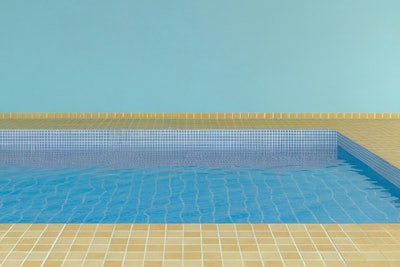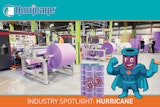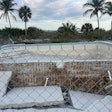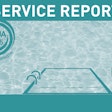
Even after many articles, forums and personal discussions, there remain misconceptions about acceptable values for chemical operating parameters such as pH, alkalinity, and sanitizer levels in the standard, APSP-11. ANSI/APSP/ICC-11 American National Standard for Water Quality in Public Pools and Spas defines specific ranges for these parameters for proper care of recreational water. These myths were discussed at the 2023 World Aquatic Health Conference by PHTA Recreational Water & Air Quality Committee members Jody O’Grady, Dr. Joseph Laurino, and John Weber.
MYTH 1 - THE STANDARD DOES NOT ALLOW OPERATORS TO DEVIATE FROM THESE VALUES UNDER ANY CIRCUMSTANCES.
This is FALSE. The standard states that the required values must be maintained when the pool is open for swimmers. There are permissible times when the pool may operate outside these limits. These include:
- During the winter season, when adjustments are made to accommodate lower temperatures.
- During the evening when the pool is closed for filtration cleaning and maintenance.
- When chemical adjustments need to be made, such as pH balancing or surface treatment.
- When special sanitization procedures are required, such as superchlorination.
MYTH 2 - IT’S OKAY FOR PH TO BE OUTSIDE THE ACCEPTABLE RANGE STATED IN APSP-11 BECAUSE THE STANDARD IS TOO LIMITING.
This is FALSE. The pH of pool water spontaneously increases due to the loss of dissolved carbon dioxide (CO2) to the air above the pool water. This phenomenon is described by Henry’s Law of Gases which states that, "the solubility of a gas in a liquid is directly proportional to the partial pressure of the gas above the liquid.”
Since the pool is open to air, CO2 dissolved in the water is constantly released into the air above the pool water. This causes the pH to increase over time. While there is no way to control the release of carbon dioxide from the pool water into the air (especially in cases where there are waterfalls, fountains, or connected hot tubs), there is a way to control the rate of increase of the pH by using muriatic acid or CO2 gas. Lowering the carbonate alkalinity to the low end of the acceptable range can also slow the release of carbon dioxide, thereby slowing the increase in pH.
Testing the pH frequently will allow you to make minor adjustments, with acid, throughout the day. Or, if you find that the pH needs constant attention, an automated solution might be right for you. Maintaining the correct pH range is crucial because, by doing so, you optimize the activity of the active chlorine in the water. High pH can lead to other problems also such as increased scale potential, metal staining and low oxidation reduction potential (ORP) readings.
MYTH 3 - ACHIEVING WATER BALANCE IN POOLS AND HOT TUBS GUARANTEES IMMUNITY AGAINST CORROSION OR SCALING.
This belief is unequivocally FALSE. Water balance indexes, such as the LSI, fall short in considering various corrosion factors prevalent in water, providing an incomplete assessment of the potential risks. Water balance indexes only measure the solubility of a single chemical compound, calcium carbonate. There are many other ways corrosion can occur in pool water, including, but not limited to, galvanic corrosion, and certain chloride to sulfate ratios. In the case of galvanic corrosion electrolysis caused by the presence of dissimilar metals will cause corrosion of the “weakest” metals.
Galvanic corrosion can occur in freshwater pools and is enhanced in saltwater pools. In pools, the items that corrode typically contain copper (such as pipes, spillways, and heat exchangers) and/or stainless steel (such as ladders, railings, and spillways).
Additionally, water parameters are in a constant state of flux and lack a stable equilibrium saturation. As such, these indexes should only be utilized as predictive tools rather than definitive indicators. Range chemistry is required for pools that are operational with swimmers present. Indexes, such as LSI, can be useful in making adjustments to the water quality parameters during winter closings or when initially dosing chemicals during the start-up of a newly surfaced pool.
MYTH 4 – “CHLORINE LOCK” IS A USABLE SPECIFIC TERM TO DESCRIBE CONDITIONS IN A POOL.
The term “chlorine lock” lacks a unified definition, leading to varied interpretations within the industry. These interpretations range from excessive cyanuric acid to issues with registering chlorine levels or maintaining persistent elevated levels of chlorine.
When faced with scenarios where chlorine doesn’t register despite addition or when chlorine levels remain consistently high, alternative factors, such as high chlorine demand or test limitations, should be considered. These situations don’t necessarily imply a “chlorine lock” but rather suggest other underlying issues.
In essence, “chlorine lock” as a singular phenomenon isn’t an established reality within the pool maintenance field. Instead, the term encompasses a range of potential issues, each requiring specific investigation and resolution.
MYTH 5 - CHLORINE DEMAND IS DIRECTLY LINKED TO PHOSPHATES/ NITRATES.
The misconception linking high phosphate or nitrate levels to increased chlorine demand overlooks the limited interaction of these compounds with chlorine. While phosphates and nitrates themselves don’t directly contribute to chlorine demand, various other factors, such as algae, organic contaminants, or ammonia can significantly influence chlorine demand in pool water.
Instead of solely targeting phosphate or nitrate levels to address chlorine demand, a more effective strategy involves addressing the root causes of increased demand. This might involve tackling algae growth, managing organic contaminants, or addressing ammonia presence in the water.
Although reducing phosphate or nitrate levels won’t directly alleviate chlorine demand, replacing a portion of the water can help dilute overall impurities, potentially leading to reduced chlorine demand by lessening the overall load of various substances in the water.
This article first appeared in the February 2024 issue of AQUA Magazine — the top resource for retailers, builders and service pros in the pool and spa industry. Subscriptions to the print magazine are free to all industry professionals. Click here to subscribe.











































